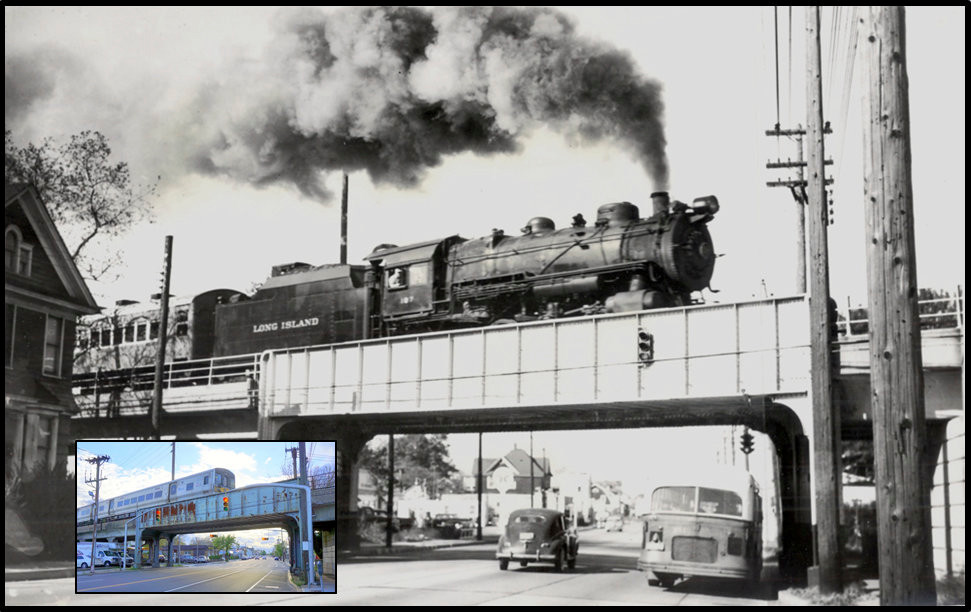Sooty Splendor — A steam locomotive’s swan song
“Cameras clicked faster than the wheels of the steam train on Sunday when 350 gaping passengers were taken on a tour over long-abandoned tracks,” reported Newsday on October 28, 1952. For nine hours that day, avid rail and camera enthusiasts rode over 90 miles on a Long Island Rail Road “Fan-Trip” sponsored by the New York Chapter of the National Railway Historical Society. With a screeching whistle, and a vast plume of smoke and steam, the No. 107 chugged its way northward on the single-track West Hempstead Branch over Merrick Road. The passengers rode in half a dozen cars (separate cars for reporters and photographers) and made six stops along the way for photo-taking. The sight of this formidable “iron horse” must have been a thrilling moment for Max H. Hubacher (1900-1989), a Swiss immigrant who lived on Dubonnet Road in Gibson, when he snapped this awe-inspiring photograph at about 11 a.m. that morning.
The WHB — also referred to as the Tigertown Branch because of the area’s tough reputation — was constructed in 1893 by the New York Bay Extension Railroad Company, a subsidiary of the LIRR. It originally extended to Mineola, beyond its current terminus at West Hempstead.
The sparse ridership on the branch, however, made steam trains a costly operation. To help solve this problem, the LIRR purchased electric trolley cars that operated on storage batteries, which were recharged at a charging station in Valley Stream. Passengers referred to these trolleys as “dinkies” while the railroaders derisively nicknamed them “moxie wagons” because they broke down often. The cars were retired in 1926 when the branch was electrified.
Location: looking west on Merrick Road (Railroad Avenue)






